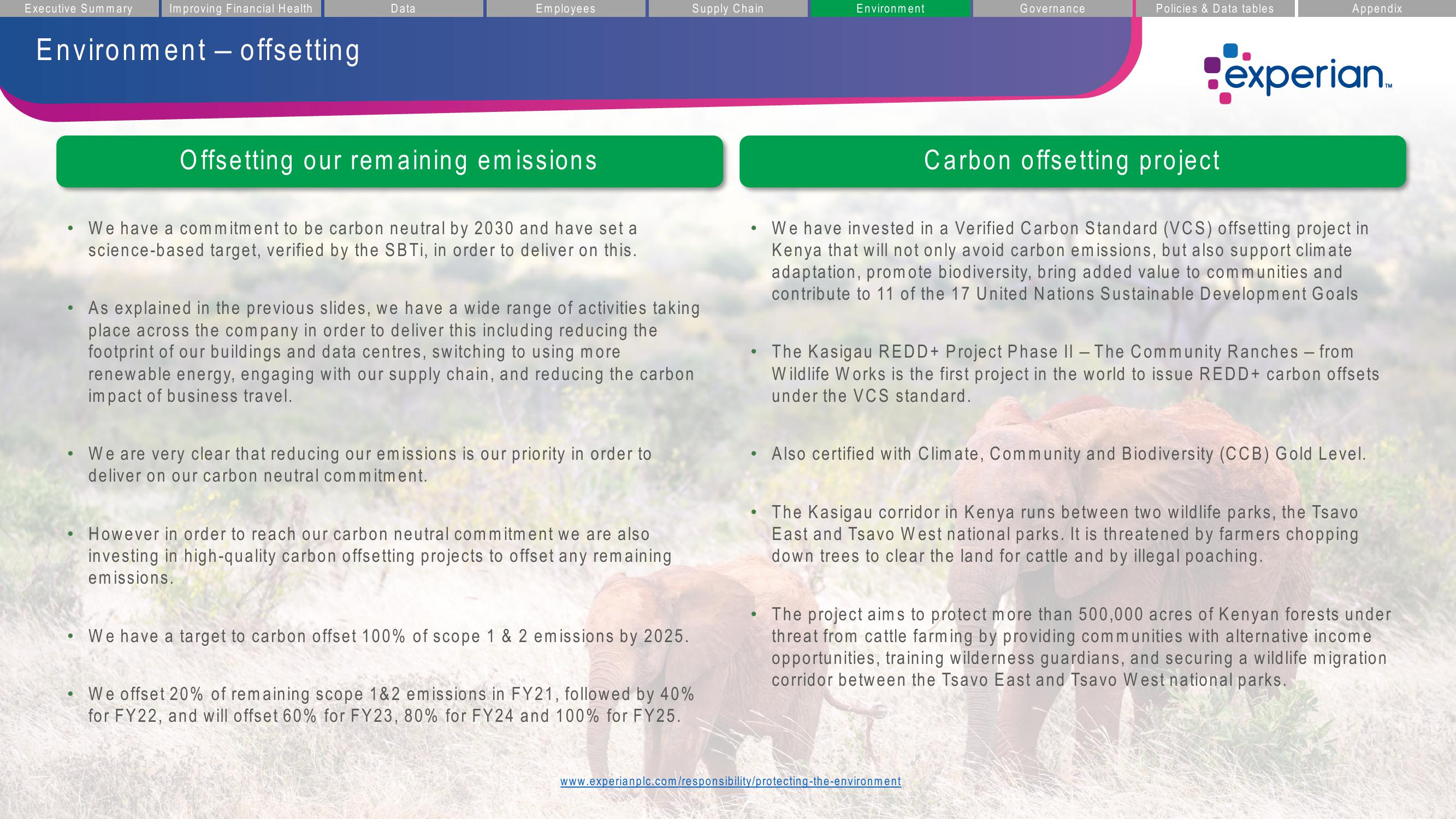Experian ESG Presentation Deck
Executive Summary
Improving Financial Health
Environment - offsetting
Data
Employees
Offsetting our remaining emissions
We have a commitment to be carbon neutral by 2030 and have set a
science-based target, verified by the SBTi, in order to deliver on this.
As explained in the previous slides, we have a wide range of activities taking
place across the company in order to deliver this including reducing the
footprint of our buildings and data centres, switching to using more
renewable energy, engaging with our supply chain, and reducing the carbon
impact of business travel.
• We are very clear that reducing our emissions is our priority in order to
deliver on our carbon neutral commitment.
However in order to reach our carbon neutral commitment we are also
investing in high-quality carbon offsetting projects to offset any remaining
emissions.
Supply Chain
We have a target to carbon offset 100% of scope 1 & 2 emissions by 2025.
We offset 20% of remaining scope 1&2 emissions in FY21, followed by 40%
for FY22, and will offset 60% for FY23, 80% for FY24 and 100% for FY25.
●
●
Environment
Governance
Policies & Data tables
Appendix
experian.
Carbon offsetting project
We have invested in a Verified Carbon Standard (VCS) offsetting project in
Kenya that will not only avoid carbon emissions, but also support climate
adaptation, promote biodiversity, bring added value to communities and
contribute to 11 of the 17 United Nations Sustainable Development Goals
The Kasigau REDD+ Project Phase II - The Community Ranches - from
Wildlife Works is the first project in the world to issue REDD+ carbon offsets
under the VCS standard.
www.experianplc.com/responsibility/protecting-the-environment
Also certified with Climate, Community and Biodiversity (CCB) Gold Level.
The Kasigau corridor in Kenya runs between two wildlife parks, the Tsavo
East and Tsavo West national parks. It is threatened by farmers chopping
down trees to clear the land for cattle and by illegal poaching.
The project aims to protect more than 500,000 acres of Kenyan forests under
threat from cattle farming by providing communities with alternative income
opportunities, training wilderness guardians, and securing a wildlife migration
corridor between the Tsavo East and Tsavo West national parks.View entire presentation